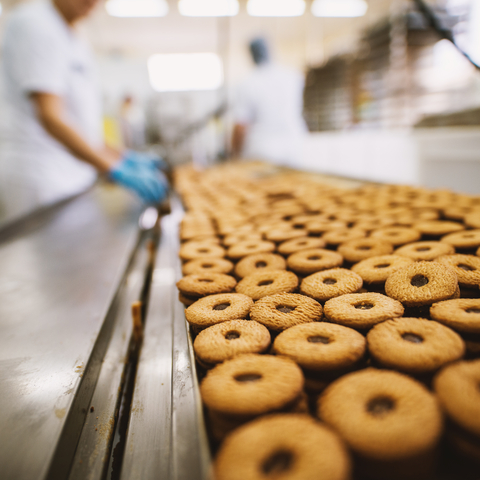Guest Post: The Ultimate Guide to Growing Your Food Business with Recipe Marketing
One of the biggest questions facing any small food brand is, how do I make my products stand out in a market with tons of other options?
When consumers have near-infinite choice, brands must get creative and find ways to reach their target customers. With food products in particular, I believe there’s one technique that stands above all the rest – recipe marketing. As a successful food blogger at One Ingredient Chef, I've seen first hand just how powerful recipes can be to inspire the use of particular products.

At its core, recipe marketing is about promoting your brand’s products by creating and sharing recipes that include your products as ingredients. This method is incredibly effective because it presents your products in a way that adds value to the consumer's life. Sharing a recipe feels more like offering helpful advice than making a sales pitch.
Statistics underscore the potential of recipe marketing. A 2022 study by Morning Consult revealed that two-thirds of US adults used a recipe for cooking within the past week, equating to approximately 175 million individuals. Furthermore, 71% of consumers turn to digital recipes for inspiration.
Imagine being able to easily reach your entire addressable market in a way that showcases your product and doesn’t get ignored as just another advertisement. Recipe marketing can do just that.
If you’re thinking, "recipe marketing sounds great, but how do I actually create and share recipes with my products?!", the rest of this post has you covered. I’ll present a complete guide to effectively planning, creating, and sharing recipes for your business. The best part? With this plan, you can do an entire month’s worth of recipe marketing in about one afternoon a month.
How to Create Recipes with Your Products
The foundation of recipe marketing is, of course, acquiring recipes that feature your products. For this, you essentially have three options…
First, you can hire professional recipe developers. They often charge $300-500 per recipe and have limited licensing and distribution agreements.
Secondly, you can create them in-house, either on your own or with an in-house culinary team.
For most smaller to medium-sized brands these options make it prohibitively expensive to create the quantity of recipes needed to do recipe marketing effectively.
For this reason, I built a third option – a new tool called DishGen to democratize recipe creation with the power of AI. DishGen automates the recipe creation process, allowing brands of any size to generate custom recipes featuring their products within seconds. Simply input a prompt, such as "create a pasta recipe with my brand name pasta sauce," and DishGen delivers a tailored recipe ready for marketing use. This approach levels the playing field, enabling smaller brands to compete with the largest companies in the world of recipe marketing.
Even better, DishGen can generate AI-based depictions of the recipes at the click of a button and the results can be stunning:


Creating a Recipe Marketing Schedule
Once you have a steady supply of recipes that include your products by using DishGen or another method, the next step is to build an effective content marketing schedule. How many recipes will you create per week/month? On what topics? And how will you share them?
Let's consider a hypothetical olive oil brand named Ollia for the sample month of March to see how Ollia can utilize DishGen to generate a series of recipes that highlight the versatility of their olive oil.
It is often best to share 1-2 recipes per week, depending on the holidays and current events. For March, let’s make one recipe a week as a baseline, plus two special recipes for March Madness and St Patrick’s Day. Here’s what I came up with - check out the links to see the full recipes on DishGen. Note that it creates full titles, descriptions, and optionally photo depictions of the recipes –
- Week 1: Sunshine Vinaigrette Dressing
- Week 2: Garlic Parmesan Breadsticks
- Week 3: Rustic Vegetable Tart
- St. Patrick's Day: Irish Herb Pesto Pasta with a Pot o' Gold Twist
- Week 4 Zesty Lemon and Herb Roasted Salmon
PRO TIP: If you don’t know what to make, DishGen has a built-in tool called the Idea Generator. With this, you can simply type in "Appetizer recipes that feature olive oil" and get creative suggestions that you can then turn into complete recipes:

Content Distribution
Now that we have a month’s worth of custom recipes that we prepared in under an hour, what do we do with them? How do we get them in front of our audience?
While there are dozens of ways that recipes can be shared, I typically focus on four key areas:
- Social Media: The simplest and cheapest option is also the biggest immediate opportunity – sharing recipes directly on Facebook, X, Instagram, and Pinterest. Once you have a recipe, you can simply paste the ingredients, steps and photo into the post itself. Not only does this engage your existing audience, but it helps your content spread. People love to share, pin, and re-post enticing recipes – giving you the opportunity to reach a vastly larger audience with no additional work or cost. One viral recipe can reach tens of thousands of potential customers.
- Advertising: Recipe-based advertising is highly effective. If you look at all the sponsored food-related posts on Pinterest, for example, nearly 100% feature a recipe. Even if your brand doesn’t currently have an advertising strategy, simply boosting recipe posts on social media for $10 or less can potentially give you access to hundreds of new targeted customers. There is perhaps no faster or more effective way to grow your followers than through recipe-based ads or boosted posts.
- Blog/Website: If you currently have a website, working with your web developer to setup a recipe section is our #1 strategy for marketing through recipes. Here’s why – recipes on your own website can passively draw in new customers over time through free organic search traffic – potentially hundreds or thousands of visitors per month. Plus, you can link your social recipe posts back to your own website where purchases are more likely and customers can engage more deeply with your brand.
- Packaging: While all the recipes you create cannot be featured on product packaging, including one of your favorites – or even a QR code linking back to your socials or blog, promising something like, "Over 100 Free Olive Oil Recipes" can be a powerful way to add value, stay top of mind, and encouraging repurchases.
I hope you can see that this multi-pronged approach is the real power of recipe marketing. You can take one piece of engaging content and spread it across numerous channels, reaping both immediate and long-term results to create lasting growth unlike any other strategy.
If you would like to try recipe marketing with DishGen, we’ve partnered with them to offer a 7-day free trial as well as a 20% discount on your first 3 months (monthly) or 1 year (yearly) with code RECIPAL. Sign up for DishGen at DishGen.com/pro.






